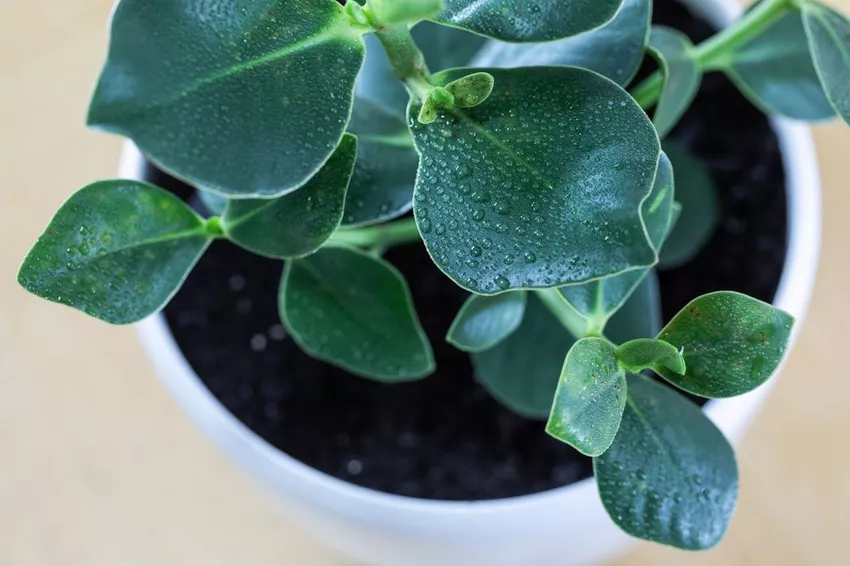While native tree species are unsuitable for indoor cultivation, tropical trees such as the balsam apple make excellent indoor plants.

The balsam apple (Clusia rosea) has long been an insider tip among bonsai growers because of its vigorous character. And Clusia rosea also impresses as a classic pot culture thanks to its ornamental appearance. The reason for this is in particular its fig-like leaves, which is why the succulent tree is also nicknamed balsam fig. A tropical alternative to the classic ficus.
The apple-like capsule fruits of the tropical tree also have a certain ornamental value. This is especially true when the fruits open up in a star shape after they have ripened and then appear like tropical flowers thanks to the deep red seed fan.
Note:
Although the balsam apple's name might suggest otherwise, its apple-like fruit is not edible. On the contrary, they are even slightly poisonous and should never be eaten.
Balsam Apple - Properties and Speci alties
The balsam apple originally comes from the Caribbean, where its wild forms grow up to 20 meters tall. In room culture, however, it remains significantly smaller at 2 to 3 meters and can also be kept at the desired height by regular pruning measures.
Clusia rosea is characterized by its paddle-shaped leaves, which are reminiscent of Ficus species such as the Chinese fig. Just like these, the balsam fig is often cultivated as a bonsai, which opens up interesting possibilities for keeping it as a houseplant.
The vanilla-scented, white to white-pink funnel flowers of Clusia rosea are also a real eye-catcher. They are reminiscent of roses and grow in bunches on balsam apples outdoors from July to August. In indoor culture, on the other hand, good care is required to drive the tree into bloom. Thanks to the easy-care type of Clusia rosea, this usually works without any problems.
Balsam apple - location and substrate
Due to its origin, the balsam apple prefers a warm and bright location all year round. The site temperatures should not fall below 20 °C even in winter and also a certain amount ofconstant humidity is recommended. The latter can be ensured, for example, by regularly spraying the plant.
You can use ordinary potting soil for Clusia rosea as a substrate. It is only important that the soil is rich in humus and nutrients and has a neutral pH value. You can mix in some sand to make the soil a little more permeable.
Care for balsam apple properly

❍ Pour balsam apple:
Because the balsam apple is a succulent, a little finesse is required when watering. The golden rule, as is so often the case in plant cultivation, is: water moderately but regularly. It is best to do a finger test before watering again. When the soil has dried well, it can be watered again.
You can use calcareous tap water to water Clusia rosea without hesitation, because the plant is quite tolerant of lime. At best, lime-free water could be useful for spraying the plant to avoid unsightly water stains on the leathery leaves.
❍ Fertilize balsam apple:
Clusia rosea is also relatively undemanding in terms of its nutritional requirements. During the main growth phase from April to September, one fertilization per month is sufficient. Ideally use liquid fertilizer for succulents and remember that less is usually more with balsam apples. The administration of the fertilizer in half the concentration is completely sufficient and reliably prevents over-fertilization.
❍ Repot balsam apple:
It is advisable to repot a Clusia rosea for the first time immediately after purchase, since tropical plants are often delivered in pots that are too small. After that, it is enough to repot the plant every two or three years in spring when it gets too cramped in the old planter.
❍ Cut and propagate balsam apple:
Regular pruning of the balsam apple promotes good branching, making its leaves more bushy. The great thing: you can use the ends of the shoots immediately after cutting as cuttings for propagation.